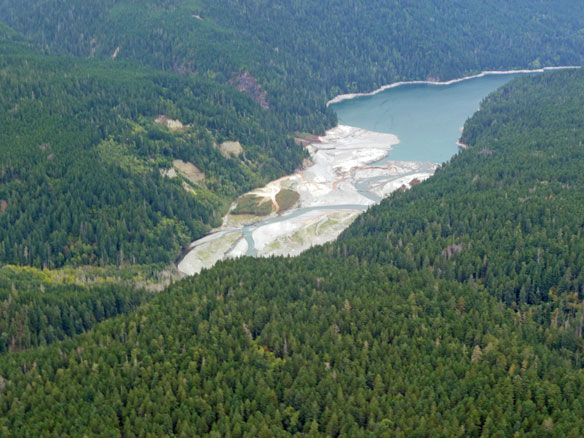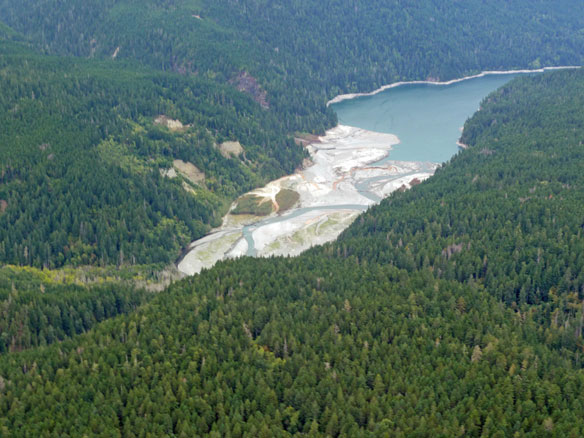
Elwha Dam removal, 2011. The largest dam-removal project in U.S. history—the Elwha River Restoration Project—commenced during the second week of September 2011, when National Park Service contractors began to dismantle two dams on the Elwha River in Washington State. The 32-m-tall Elwha Dam and the 64-m-tall Glines Canyon Dam, completed in 1913 and 1927, respectively, have been blocking the natural supply of sediment to the lower river and coast and severely limiting salmon and steelhead spawning for nearly a century.Captions: Jonathan A. Warrick / USGS. Photograph: © SAF
Excerpts;
A project to remove two hydroelectric dams from the Elwha River in Washington state is bringing benefits for local wildlife. In June, only months after the removal of the first dam was completed, salmon and steelhead spawned in two tributaries that had been inaccessible for more than 100 years.
But the fish are not home free yet. Massive amounts of sediment that had accumulated behind the dam have now been released, and could clog the gills of young and adult alike, killing them. The sediment will muddy the waters for at least three years before spreading out and rebuilding downstream river beds and coastal beaches; until then, the fish must navigate treacherous waters to breed…
Sediment Starts to Really Hit The Elwha
Long expected, the heavy loads of sediment created by demolition of Glines Canyon Dam and Elwha Dam are starting to hit the Elwha river.
On The Elwha, A New Life When The Dam Breaks
Nobody figured the largest dam removal project ever attempted in the U.S. was going to be easy, or fast.The nation’s largest and most ambitious dam removal will begin this month, when workers start demolishing two antique dams on Washington state’s Elwha River…

Sediment trapped, Elwha river. Photograph: © SAF









